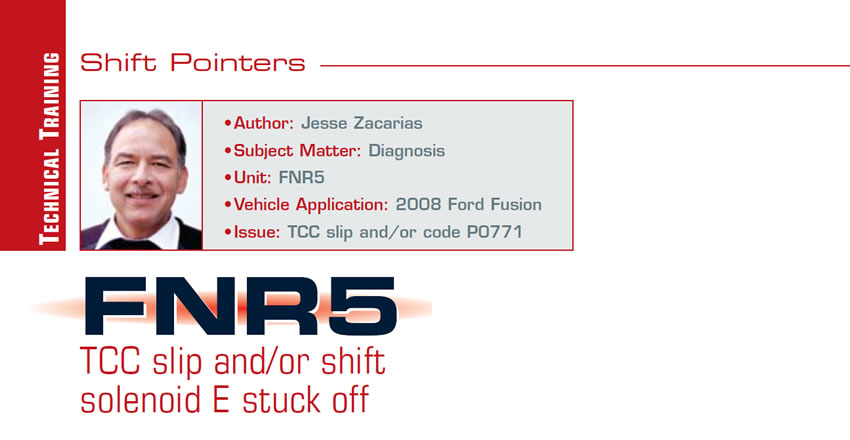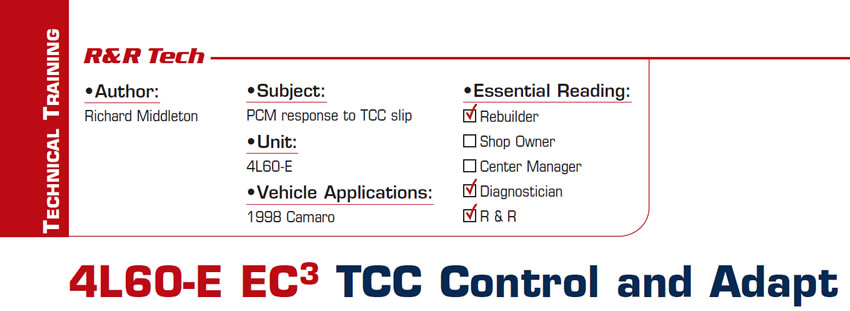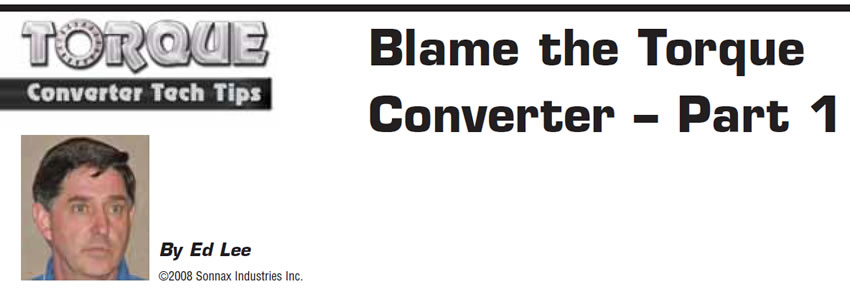FNR5 TCC slip and/or shift solenoid E stuck off
The FNR5 transmission can be found in most Ford and Mazda front-wheel-drive vehicles and has been with us for a while. One of the most-common calls we get on this transmission in the tech center at Valve Body Pro is for a code P0741 TCC slip and/or P0771 shift solenoid E stuck off. Recently we had a 2008 Ford Fusion with this problem. Figure 1 shows the SSA (SSPCA) increasing the modulation but no drop in rpm slip.

4L60-E EC3 TCC Control and Adapt
While I was helping a co-worker repair a TCC slip, we analyzed some graphs and noticed some interesting info on how the PCM behaves and how it “sees” and adapts for a TCC slip.

Blame the Torque Converter – Part 1
Society often influences us to try to blame others for our problems. From an early age we try to place blame with friends or siblings. Our training usually continues into our school age, when the guilty person is always “the other guy.” It seems only natural for this mindset to continue into the workplace. This is especially true if your workplace happens to be with the automatic-transmission industry. The mysterious inside of a sealed torque converter is easily substituted for the “big dumb kid” in the back of the classroom. The following are examples of a torque converter being unjustly blamed for a transmission problem.

740/1740 Codes and Chrysler Converter Flow
740/1740 codes tell you there is excessive slip at the TCC clutch. The engine and transmission output speeds are constantly being monitored. You can compare the difference in the two speed rates to determine transmission slip. If the RPM parameters for a slip in a given gear are met and TCC apply has not been commanded, you will see a gear-ratio code. But, if the RPM parameters for a slip in a given gear are met and TCC apply has been commanded, you will see a (TCC slip) 740 code.

P1870 Revisited
Just when you thought you had all the P1870 torque-converter-clutch slip codes under your belt, another vehicle comes along – and here we go again!

